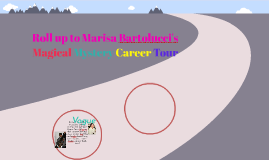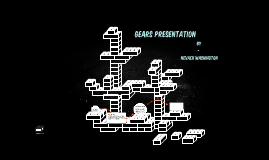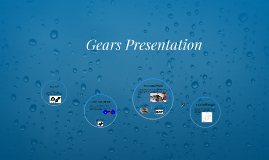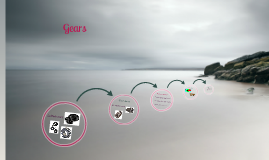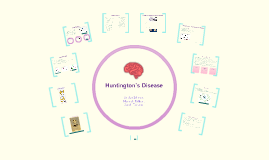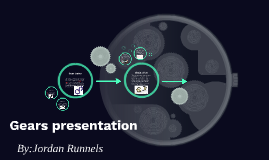HD Presentation
Transcript: 1860 http://www.uihealthcare.com/topics/medicaldepartments/neurology/huntingtonsdisease/overview.html Charles Davenport Dementia that gets worse Disorientation Loss of judgement Loss of memory Personality changes Speech changes Additional symptoms Anxiety, stress, tension Symptoms in children Rigidity Slow movements Tremors So what do you think this repeat would do to gene function? 1911 Transcriptional dysregulation Protein misfolding and degradation Impairment in intracellular transport, mitochondrial function and synaptic transmission. http://www.stanford.edu/group/hopes/cgi-bin/wordpress/2010/06/the-cognitive-symptoms-of-huntingtons-disease/ Post translational modification-acetyl tag signal SirT1 inhibition, Selisistat Phosphodiesterases inhibitors: PDE 10 and 4 now in testing Gene silencing Stem cell generation of neurons Bruproprion Manipulation of synaptic activity - Memantine Ch Implications of HD http://atlasfolding.com/?page_id=51 Current Therapies https:///nm/journal/v10/n7s/full/,DanaInfo=www.nature.com+nm1066.html Genetic Testing Why Test Mid Stage 1872 Works Cited Amber Johnson, Hannah Killian, Sarah Tamura https://www.stanford.edu/group/hopes/cgi-bin/wordpress/2010/06/the-inheritance-of-huntingtons-disease-text-and-audio/ Basic Symptoms http://schoolworkhelper.net/huntingtons-disease-causes-symptoms-testing/ Mood changes Movement changes Cognition changes Two Forms Huntington's Disease Alzheimer's disease Parkinson's disease Amyotrophic lateral sclerosis (ALS) Prion diseases (CJD kuru etc.) Lose ability to speak and respond Chorea Lose ability to work, drive, perform activities of daily living Difficulties with balance and motor tasks Difficulties with processing information Irritability, aggression, depression Can be done safely More serious than a simple blood test Challenging psychological and social aspects Genetic Information Non-discrimination Act (May 21st 2008) Medical Value? Testing of Minors Anonymous Testing Testing of individuals at 25% risk 1846 Over 80 testing centers nation wide Emotional and ethical issues that come with HD diagnosis - no treatment to delay onset of HD symptoms, cannot cure HD Psychological support is very important ~ 10-20% of people at risk for HD request testing Grade 0: appears indistinguishable from normal brains after gross examination. Grade 1: shows atrophy in the tail, and in some cases the body, of the caudate nucleus. Grade 2: is associated with striatal atrophy that is more pronounced than that detected in grade 1 brains. Grade 3 displays severe striatal atrophy. Grade 4 includes HD cases with severe atrophy of the striatum and up to 95% neuronal Confirmatory/Diagnostic Testing Predictive Testing Prenatal Testing Grading Based on pattern of Striatal Degeneration Stages 1-2 http://www.nature.com/nrn/journal/v5/n5/fig_tab/nrn1386_F1.html Huntington's vs. Neurodegenerative Diseases Adult-onset : most common ages 30 to 50 Early-onset: small number of cases Worsen in 10-25 year period 1 in every 10,000 Americans has HD and more than 250,000 are at risk Most common hereditary disease Behavior Behavioral disturbances Hallucinations Irritability Moodiness Restlessness or fidgeting Paranoia Psychosis Abnormal movements Facial movements Head turning Jerking movements of arms, legs, face etc Slow uncontrolled movements http://www.cumc.columbia.edu/psjournal/sites/juno.cumc.columbia.edu.psjournal/files/Huntington.jpg Johan Christian Lund Dr. Huntington Late Stage Ambrose, C. M.; Duyao, M. P.; Barnes, G.; Bates, G. P.; Lin, C. S.; Srinidhi, J.; Baxendale, S.; Hummerich, H.; Lehrach, H.; Altherr, M.; Wasmuth, J.; Buckler, A.; Church, D.; Housman, D.; Berks, M.; Micklem, G.; Durbin, R.; Dodge, A.; Read, A.; Gusella, J.; MacDonald, M. E. "Structure and expression of the Huntington's disease gene: evidence against simple inactivation due to an expanded CAG repeat". Somatic Cell & Molecular Genetics; 1994, 20: 27-38. Conforti, P., Camnasio, S., Mutti, C., Valenza, M., Thompson, M., Fossale, E., . . . Cattaneo, E. (2013). Lack of huntingtin promotes neural stem cells differentiation into glial cells while neurons expressing huntingtin with expanded polyglutamine tracts undergo cell death. Neurobiology of Disease, 50, 160-170. doi: 10.1016/j.nbd.2012.10.015 Giampà, C., Laurenti, D., Anzilotti, S., Bernardi, G., Menniti, F. S., & Fusco, F. R. (2010). Inhibition of the striatal specific phosphodiesterase PDE10A ameliorates striatal and cortical pathology in R6/2 mouse model of huntington's disease. PloS One, 5(10), e13417. Gil, J. M., & Rego, A. C. (2008). Mechanisms of neurodegeneration in Huntington’s disease. European Journal of Neuroscience, 27(11), 2803-2820. Graul, A. I., & Prous, J. R. (2005). Executive summary: nicotine addiction. Drugs of Today, 41(6), 419. Ho, L. W.; Carmichael, J; Swartz J; Wyttenbach A; Rankin J; Rubinsztein DC. "The molecular biology of Huntington's disease." Psychologocial Medicine; 2001, 31(1): 3-14. Huntington’s Outreach Project for






